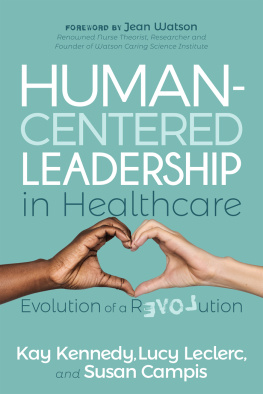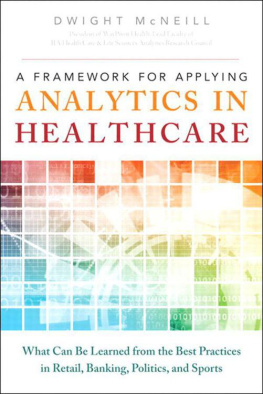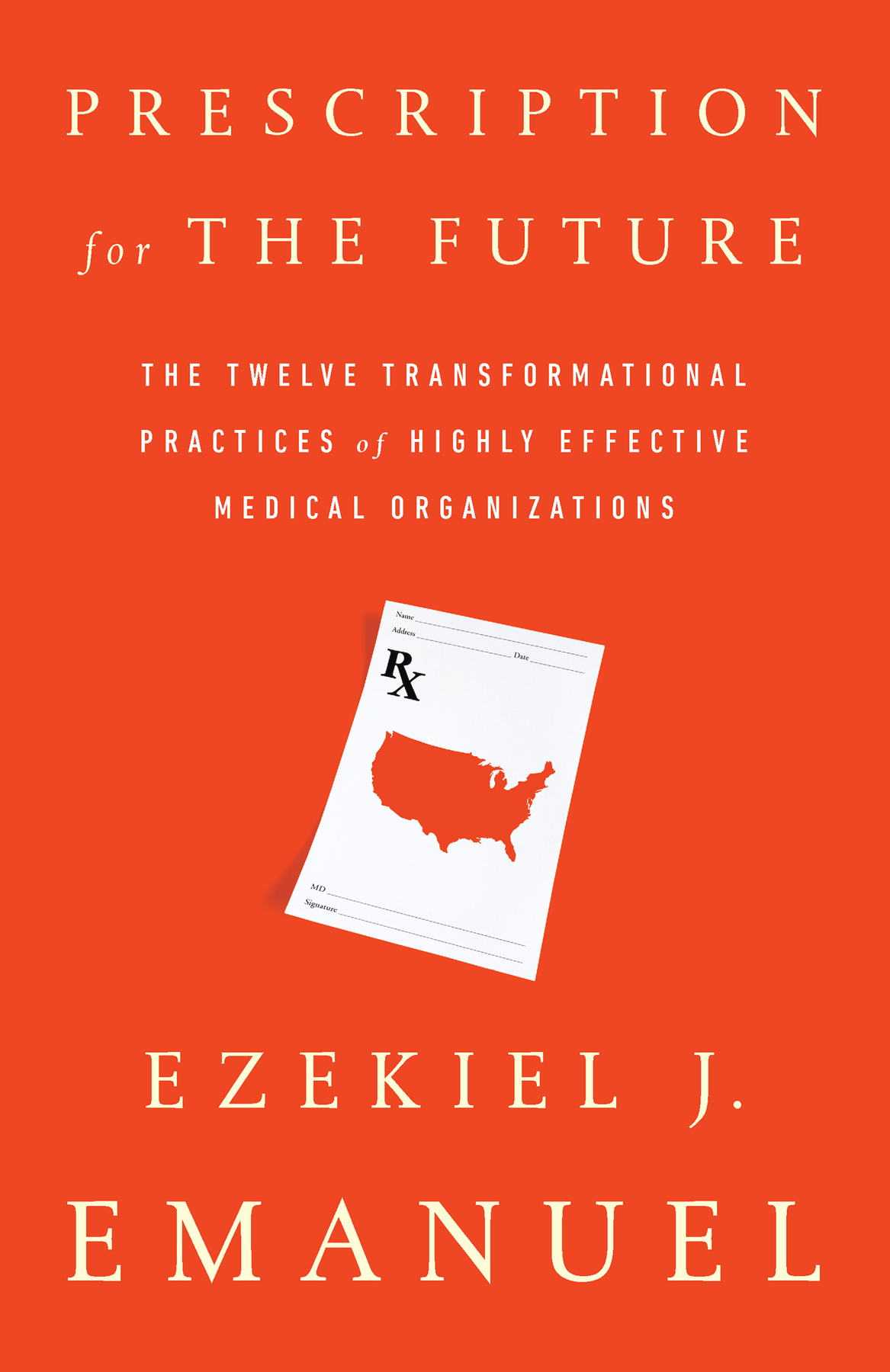The healthcare system is dynamic. In part, this is because of the election of a new administration, its commitment to repealing and replacing the Affordable Care Act without much specific detail, and the consequent uncertainty about what policies will ultimately come out of Washington. This dynamism is partially the result of the ongoing changes currently occurring throughout the healthcare system. Nevertheless, we have reached and exceeded the tipping point of care delivery transformation. Although the direction of change is now clear, the pace at which it will occur in different localesand whether there might be some temporary setback along the courseremains unclear. For now, all the information is accurate up until the words were set in the book during the spring of 2017.
This book contains many stories. All the patients names have been changed to protect their privacy. A few physicians namessuch as my primary care physicians namehave been changed, again, to protect their privacy. The names of the physician leaders and executives at the various practices, multispecialty groups, and health systems that I visited as part of my research and case development are real.
Finally, I have several conflicts of interest to disclose. I teach at the University of Pennsylvania and describe some of the innovations at my home institution. Over the years I have given scores of speeches for fees, including at some of the organizations profiled in the book: Kaiser Permanente, Anthem (owner of CareMore), and Advocate Health Care. More importantly, I mention the work of several private, for-profit companies innovating and transforming the system. I work for a venture capital firm, Oak HC/FT, which has investments in 3 of the companies profiled: Aspire, Quartet, and VillageMD: I also sit on the boartd of VillageMD. Oak HC/FT and I have no financial relationship with nor have I received speaking fees or other compensation from other companies and medical organizations profiled in this book, including Aledade, Certify, ChenMed, Dean Clinic, Iora Health, WESTMED, Main Line Oncology, and Hoag Orthopedic Institute.
W ITH THE ELECTORAL VICTORY of President Donald Trump, it seems reasonable to ask whether this book is still relevant. Have current events overtaken a book advocating reform and transformation of the American healthcare system?
The short answer is no. In fact, the ideas that form the core of this bookideas aimed at showing how we can develop an innovative, value-driven healthcare delivery system in Americaare probably more relevant today than ever.
That might seem counterintuitive. Whereas a burst of healthcare reform zeal fueled the 2008 election, the results of the 2016 election can be interpreted as a backlash against the Affordable Care Act (ACA) and the changes it unleashed throughout the healthcare system. Indeed, Republicans most explicit and fundamental battle cry during the 2016 election was repeal and replace. To some degree their victory hinged on their pledge to dismantle Obamacare. Many people might logically deduce that further efforts to transform the delivery of American healthcare are misguided and mistaken.
Wrong. Reforming the healthcare system is about more than just the latest battle over the ACA or any particular healthcare regulation. Two fundamental problems plague the American healthcare system: (1) it underperforms on almost every conceivable metric, and (2) the public, small businesses, corporations, and governments all find it unaffordable. Improving the American healthcare system is something every patient, every small business owner, every corporate executive, every physician, nurse, and other practitioner, every politician and policymaker should care about. The system desperately needs to be fixed.
This book is a transformation manual, a guide to updating the health systems core: caring for patients both sick and healthy. It will help medical organizations that want to transform their care but need guidance on the right steps to take and the right sequence in which to take them.
No matter how you measure it, the American healthcare system continues to underperform. Tens of millions of people are still uninsured. Health expenditures remain astronomically high27% higher per capita than the next highest spending country, Luxembourg. Despite these exorbitant expenditures, health outcomes in the United States are not 27%, 10%, or even 5% better than in other developed countries. Although we arguably exceed the rest of the world in a few health outcomesand even these are contentiously debatedsuch as cancer survival, trauma, and organ transplantation, we lag behind in most health and healthcare domains. On even some basic measures of health system qualitylife expectancy, infant and youth mortality, immunization rates, behavioral health, asthma survival, and control of diabetesthe United States falls well below other developed countries. And there are endless complaints about impersonal care, hospital-acquired infections, rushed office visits, excessive admissions to the ICU, and too many high-tech interventions at the end of life. Such inconsistent and relatively poor performance at such a high cost should infuriate any responsible corporate executive. It rightfully infuriates the American public.
Unfortunately, this underperformance is nothing new. It did not begin with the ACA. In fact, the ACA narrowed the gap. Since its enactment in 2010, 22 million Americans have become insured, healthcare cost growth has slowed to an historic low, and by modestly reducing hospital readmissions, hospital-acquired infections, and other preventable errors, quality has improved.
Nevertheless, the public remains unconvinced that the ACA has improved the situation. Ironically, polls reveal that the public likes much of what the ACA enactedthe no preexisting disease exclusion, allowing young adults to be on their parents health insurance plans until age 26, no annual or lifetime limits on insurance coverage, limits on insurance company profits, coverage of preventive services without deductibles, and subsidies to buy private insurance. Yet the ACA became a scapegoat, the nidus for all Americans lingering anger about the healthcare system.
Today Americans are primarily angry about the affordability of health insurance and healthcare. Drug costs have skyrocketed, as epitomized by the 56-fold price increase for Daraprim by Turing Pharmaceuticals, the $600 for EpiPens, and $1,000 per pill for the hepatitis C drug Sovaldi. A visit to the emergency room, even for something as simple as a few stitches, can cost $5,000 or more. And insurance premiums have increased for most consumers while their plans have grown skimpier with ever-shrinking networks and ever-increasing deductibles. Although coverage gaps and preexisting condition exclusions were the big concerns in 2008, today the public is demanding reforms that focus on






